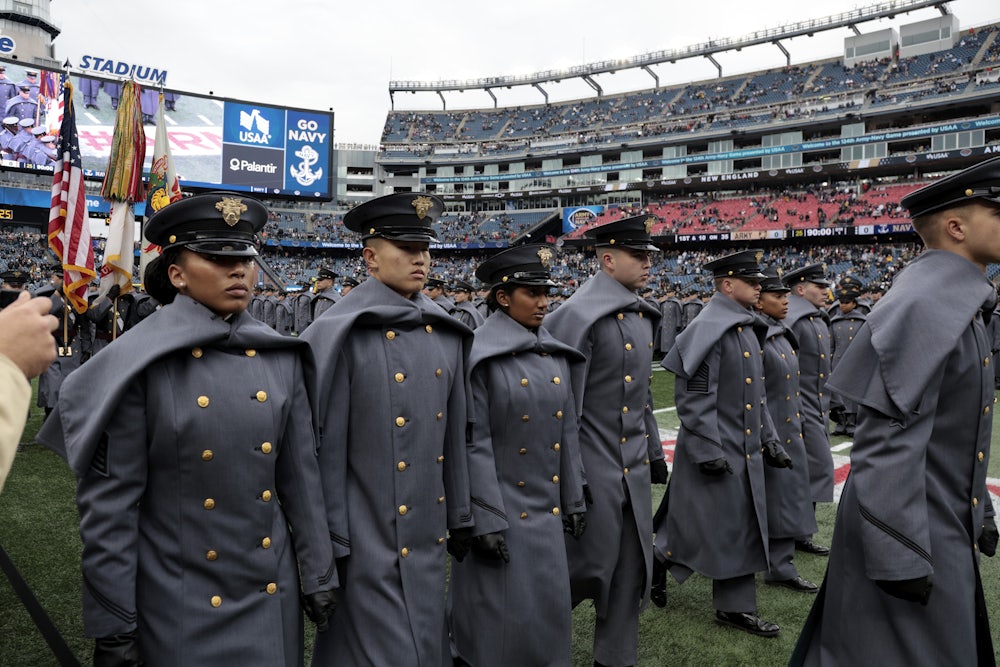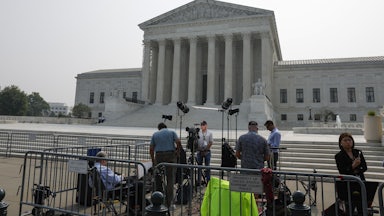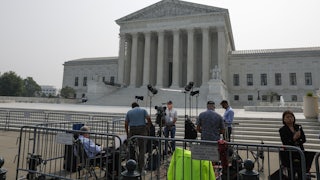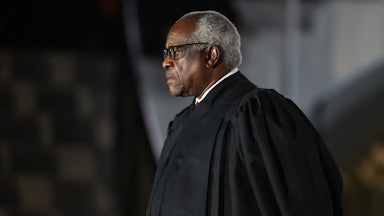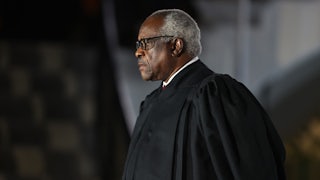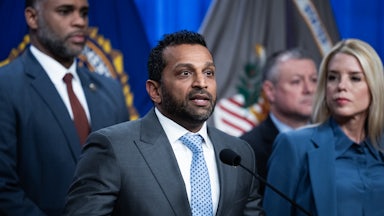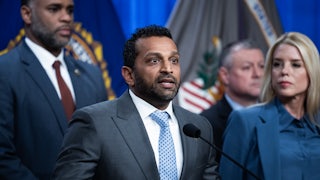Last year, the Supreme Court ruled in Students for Fair Admissions v. Harvard that the use of affirmative action in college admissions violated the Fourteenth Amendment’s Equal Protection Clause. The decision effectively ended race-conscious admissions programs throughout American higher education.
But the justices left one small exception intact in its decision. West Point and other U.S. military academies could keep using race as a factor in admissions, the court said, because they may (or may not!) be justified for reasons that don’t apply to the civilian education system.
“The United States as amicus curiae contends that race-based admissions programs further compelling interests at our Nation’s military academies,” Roberts said in a footnote to the ruling, using the Latin term for friend-of-the-court briefs. “No military academy is a party to these cases, however, and none of the courts below addressed the propriety of race-based admissions systems in that context. This opinion also does not address the issue, in light of the potentially distinct interests that military academies may present.”
Do a majority of the justices think the military-academy exemption is constitutional? Or were they simply punting on it last year so they could focus on the more immediate question before them? The court may soon have to answer that question thanks to a new lawsuit brought by Students for Fair Admissions against West Point—and decide whether the “distinct interests” that guided the justices’ predecessors still carry the same weight.
Students for Fair Admissions, or SFFA, is led by conservative legal activist Edward Blum, who filed the lawsuit on behalf of unnamed West Point applicants less than three months after the court’s ruling in its Harvard case. It largely reiterated its past arguments against race-conscious college admissions, this time backed by its legal victory last year. SFFA argued the court’s footnote only delayed the inevitable for West Point and other military academies.
“West Point has no justification for using race-based admissions,” the group argued in its initial complaint. “Those admissions are unconstitutional for all other public institutions of higher education. The Academy is not exempt from the Constitution. And its calls for blind judicial deference to the military on questions of racial discrimination are ‘gravely wrong,’ both legally and historically.” The last quotation refers to the Harvard decision’s criticism of Korematsu v. United States, which infamously upheld Japanese-American internment.
This is a familiar argument from the federal government—and a potent one in the courts. Under the Supreme Court’s precedents, claims of racial discrimination are held to a legal standard known as strict scrutiny. As its name suggests, strict scrutiny is extremely difficult to overcome. The government must generally prove that the law or policy being challenged carries out a “compelling state interest,” that it is “narrowly tailored” to achieve that goal, and that it is pursuing the “least restrictive means” to achieve that goal.
When it comes to race, the courts are particularly merciless about wielding strict scrutiny. In last year’s Harvard ruling, for example, the justices ruled that courts could not determine whether Harvard’s methods to ensure racial diversity in their student body actually worked because its compelling interest was not sufficiently measurable under judicial standards. They also ruled that the admissions policy violated the Fourteenth Amendment because it stereotyped prospective students and allegedly used race as a negative factor for admissions in some cases.
The Justice Department, arguing on behalf of the military, claimed that the “distinct interests” that separated military academies from the rest of the public higher-ed system were still valid despite the court’s ruling last term. The national security argument loomed large, with the government arguing that it needed to ensure a multiracial officer corps would oversee a multiracial armed forces.
“West Point trains battlefield leaders who must be equipped to wield lethal force, to establish cohesive rapport with subordinates who wield such force, and to lead an increasingly diverse Army in an increasingly diverse nation,” the government argued. “The military’s most senior leaders have made the judgment [...] that the Army’s interest in building a diverse officer corps is integral to ensuring national security.”
There is ample history to support that argument as a matter of policy. While Black Americans and members of other minority groups have borne arms for the United States since the Revolution, they typically did so either in small numbers or in segregated units. As part of the broader push for civil rights in the postwar era, President Harry Truman ordered the full desegregation of the military in 1948 and integrated forces saw combat in the Korean War soon thereafter.
Desegregation had an immediate impact on diversity in the non-commissioned ranks. Integrating the military’s officer corps was far more difficult. The problem became acute when large-scale deployments of U.S. forces to Vietnam began in the early 1960s, where large numbers of Black and Hispanic service members served under officers who were almost invariably white. Discrimination, both real and perceived, undermined unit cohesion and fighting effectiveness during the war.
The Supreme Court signed off on affirmative action in higher education in the 1977 decision in Regents of the University of California v. Bakke. In 2003, the Supreme Court heard Grutter v. Bollinger to reconsider that decision. The most influential brief in Grutter came not from the two parties, but from a friend-of-the-court filing by some of the nation’s most prominent military leaders, including Generals Norman Schwarzkopf, Wesley Clark, and John Shalikashvili. They cited the military’s struggles in the 1960s and 1970s to emphasize the need for a diverse officer corps.
“The danger this created was not theoretical, as the Vietnam era demonstrates,” they told the court, quoting at one point from news articles quoting other military leaders. “As that war continued, the armed forces suffered increased racial polarization, pervasive disciplinary problems, and racially motivated incidents in Vietnam and on posts around the world. ‘In Vietnam, racial tensions reached a point where there was an inability to fight.’ By the early 1970s, racial strife in the ranks was entirely commonplace. The lack of minority officers substantially exacerbated the problems throughout the armed services.”
Justice Sandra Day O’Connor, who wrote for the majority in Grutter, was initially inclined to strike down Bakke. But she changed course after reading the military leaders’ brief, as well as ones from business leaders and other private-sector groups who extolled the necessity of ensuring that the nation’s future leaders would be educated in racially diverse settings. Since national security is usually taken seriously as a compelling interest, the generals’ words—as well as their practical experience—carried the most weight. “In order to cultivate a set of leaders with legitimacy in the eyes of the citizenry, it is necessary that the path to leadership be visibly open to talented and qualified individuals of every race and ethnicity,” O’Connor wrote.
That approach still carries some weight among the current justices. In the Harvard case last year, Justice Sonia Sotomayor echoed those lessons. “Indeed, history teaches that racial diversity is a national security imperative,” she wrote, quoting from scholarly works about race relations in the U.S. military. “During the Vietnam War, for example, lack of racial diversity ‘threatened the integrity and performance of the Nation’s military because it fueled ‘perceptions of racial/ethnic minorities serving as ‘cannon fodder’ for white military leaders.’” Roberts’ footnote that carved out the academies from the court’s overall ruling suggests that at least some members of the conservative majority also weren’t willing to discount it.
A federal district court in New York rejected SFFA’s request for a preliminary injunction against West Point on January 3 on multiple grounds. Most importantly, the court ruled that the group hadn’t shown it was likely to prevail on the merits, leaning heavily on the court’s footnote from last year and what it described as an insufficient factual record. SFFA asked the Supreme Court last week to intervene and grant the injunction instead. A shadow docket ruling on an injunction doesn’t always signal how the court would ultimately rule on the merits of a case. But they trend together closely enough that it should provide some insight into how the justices are thinking about the case. The court will likely announce its decision in the coming days or weeks.
